 ‘My dog eats better than your kids’ is a pretty bold statement to make. It’s the title of Dr Peter Dingle’s latest book on nutrition and healthy living.
‘My dog eats better than your kids’ is a pretty bold statement to make. It’s the title of Dr Peter Dingle’s latest book on nutrition and healthy living.
My mum and I were lucky enough to bump into Dr Dingle at university today, where he told us all about his book. I have to admit when he told me the title, I found myself thinking ‘yeah, right! Catchy title Dr D, but I hardly believe your dog eats better than me!’
So I just finished reading his book and let me just say, Dr Dingle puts forth a strong argument with solid facts. I found myself thinking by the end ‘Maybe his dog does actually eat better than me?’ which was a good thing, because I know there is room for improvement. He has expanded my mind once again!
For instance, I have always eaten a lot of bread and pasta. This wasn’t a problem for me because I thought ‘hey, I’m Italian and plus, it’s wholemeal! The food pyramid tells me I need 6-11 servings of breads, rice, cereals, etc. So it’s OK!’
But then Dr Dingle tells us about the ‘food pyramid’ and how it came to be. Apparently it was established by Kellog’s (the grain industry) and the U.S. Department of Agriculture in the 1950s. Take a look at the bottom of the pyramid. 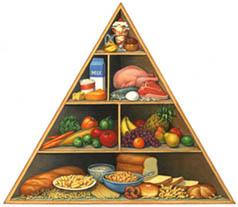 Do you see grains? Yes, the pyramid tells us we should be eating grains the most! Dig in!
Do you see grains? Yes, the pyramid tells us we should be eating grains the most! Dig in!
Dr Dingle however points us to the Harvard School of Public Health that states this is not correct. The Harvard School of Public Health actually provide us with another, new and improved food pyramid that is actually based on the latest and best science. Very impressive.
In summary, I have read several of Dr Dingle’s books before and thoroughly enjoyed them. When Dingle writes you can’t help by feel inspired and motivated to make positive changes in your life.
His latest book is however different to the others. It’s still upbeat and certainly motivating, but this one is not as long (it will take you about one hour to read). It’s also full of colourful, quirky illustrations that will make you smile and laugh out loud.
Share This:
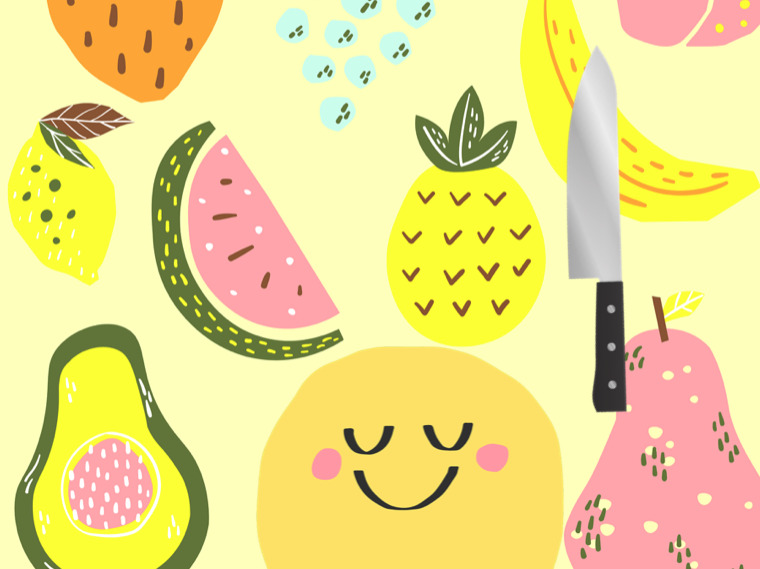
Over the years, I’ve experimented with a range of weird and wonderful stress-busting activities, including yoga, pilates, meditation classes, floatation tanks, massages, acupuncture, and sound healings (to name a few).
I’ll be the first to admit that cash-grabbing wellness gurus and advertisers have sucked me in.
In our capitalist culture, we’re sold this idea that in order to relax, we need to spend big dollars. But I now realise that the best relaxation experiences are cheap or free.
I’ve created rituals around cooking that help me stay calm, grounded, and focused throughout the day.
These days, cooking is my number one way to relax. My kitchen is my happy place, and it can be your happy place, too.
Perhaps this sounds a bit strange. But hear me out.
I haven’t always found cooking to be relaxing or particularly enjoyable.
Being half Italian, I used to get involved with the occasional food tradition, such as tomato sauce-making day. But it wasn’t like I grew up with the delicious smells of homecooked food wafting through the house.
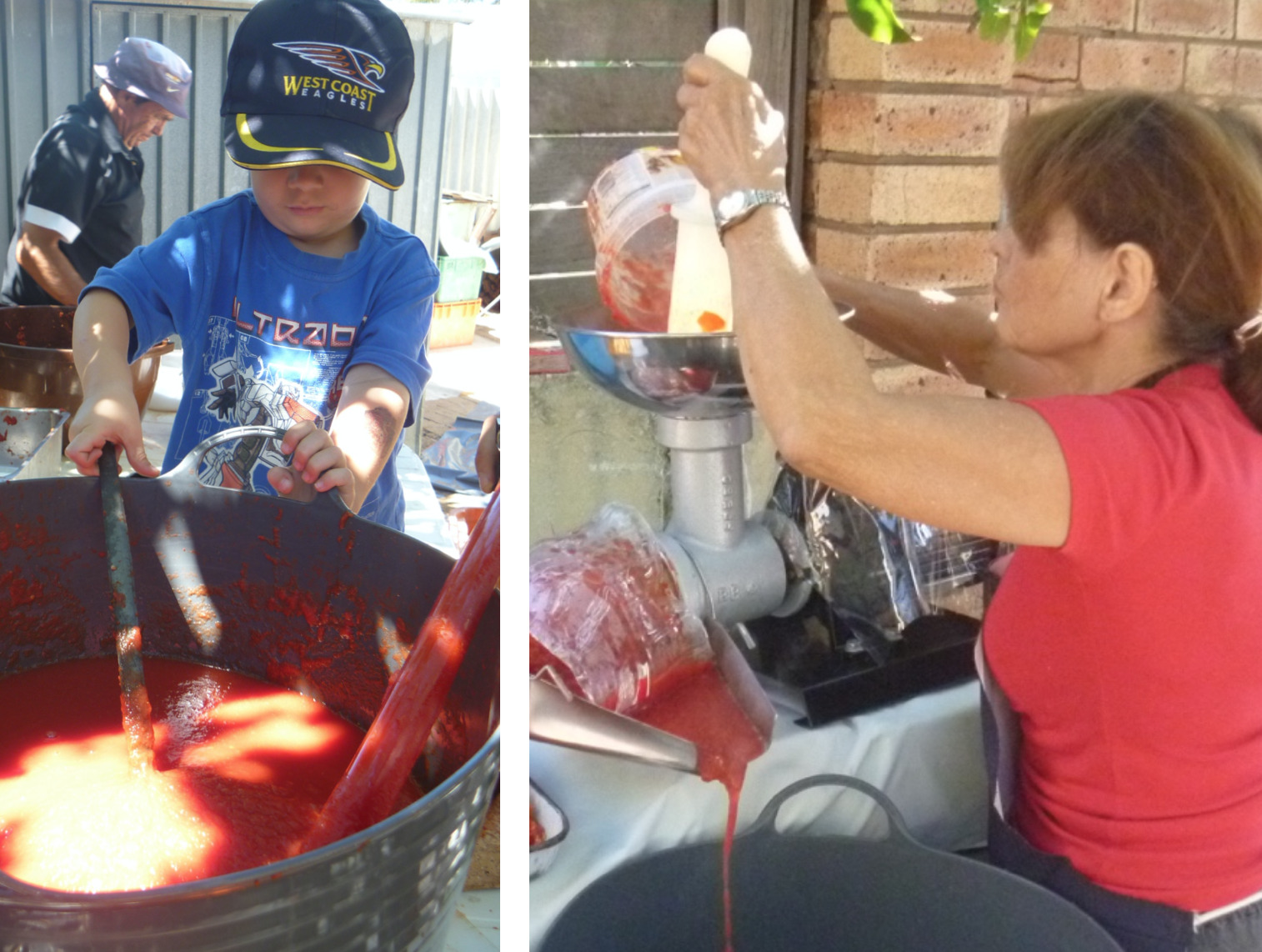
My teenage years and early twenties were filled with processed junk foods: a dizzying array of Hungry Jacks combos, greasy fish and chips, and takeaway meat lovers pizzas.
Cooking was a relaxation practice I stumbled upon much later in life.
Since upping my kitchen game and trading the expensive wellness activities for a sharp knife, solid chopping board, and fresh vegetables, my savings and confidence have grown.
To emerge from the kitchen in a calm and tranquil state, a few conditions have to be in place:
1. You cannot feel rushed
2. Your kitchen counter must be clean and clutter-free
3. You need a sharp knife to chop with
4. Your phone must be out of sight (like most things in life, it’s best not to multitask)
If these conditions are met, cooking can feel like a meditation or an empowering yoga class.
I’m not the only person who feels this way.
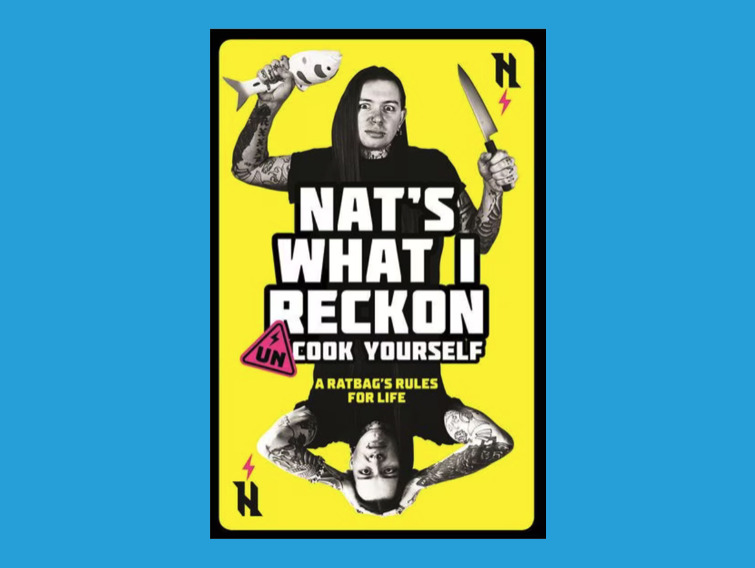
In the book ‘Uncook Yourself: A Ratbag’s Rules for Life’, Nat’s What I Reckon shares how he cooks his way through tough times. He writes:
“I reckon getting in the kitchen and un-cooking yourself from the tough moments in your head every now and then is a way better self-help routine than throwing five grand at some short-lived back pat from a cash grabbing blowhard at a self-help seminar just to tell you you’re not doing life right.”
One reason is you need to focus your mind.
When chopping with a sharp knife, you must pay attention to what you’re doing. If you get distracted, and I have (many times), you might pay the price with a cut to the finger.
Chopping is also a repetitive activity that delivers an immediate outcome. One minute, the bok choy is on the chopping board in full form; the next, it has been chopped and is ready for tonight’s stir-fry.
Cooking also requires you to slow down.
When you’re online, you tend to jump around in a frenzy. But when you’re cooking, you have to follow a recipe step-by-step. This requires focus. This focus helps to clear your mind.
Cooking also gives you a sense of control, power, and agency. As food journalist Michael Pollan says:
“Eating out breeds helplessness, dependence and ignorance, and eventually, it undermines any sense of responsibility.”
When you cook, you’re in control of the process (not some big corporate fast food company). Plus, compared to that commodified wellness experience, cooking is super cheap (all it costs is the price of a few ingredients).
It also produces a nourishing meal at the end. That meal will give you energy, help regulate your mood, and keep you calm and steady.
In the book ‘The Food Mood Connection’, Uma Naidoo argues that to decrease anxiety, you should pay attention to what you’re eating. She writes:
“A crucial part of battling anxiety is making sure your diet is full of foods that are calming and free of foods that put you on edge.”
Fast foods and highly processed foods. These foods (e.g., greasy hot chips and baked goods) are problematic because they lack fibre and the fragile micronutrients and phytochemicals needed for good brain health.
Naidoo recommends increasing your fibre intake by consuming more plants and whole foods, such as beans, brown rice, baked potatoes with the skin on, broccoli, pears, apples, and oats.
A few years ago, I delivered a talk called ‘Rediscovering the Ancient Art of Thrift’ at a local library. In my presentation, I shared the thrifty practice of avoiding eating out and cooking meals at home.
At this point in the presentation, an elderly gentleman put up his hand and said:
“But vegetables are expensive. Why not just get McDonald’s? It’s cheap, and there’s no cleaning up at the end.”
I immediately thought of a friend who, at the time, ate only McDonald’s (for breakfast, lunch, and dinner). His housemates had confided in me that his feet had developed a pungent odour.
Although my diet was far from perfect, I was concerned. If my friend kept going down this path, I could see him heading for serious trouble.
Fast forward a year: How was my friend doing?
He was not well.
He had put on a significant amount of weight and seemed depressed, rarely leaving his room except to get his next McDonald’s meal (back in those days, there was no Uber Eats).

I explained to this elderly gentleman in the library workshop:
“Maybe you’ll save a bit of time and money in the short term [buying the fast food], but eating processed food will cost you down the track. It will cost you in medical bills and poor health. Your quality of life will suffer.”
He nodded, but I could tell he wasn’t entirely convinced.
Until you’ve cut out the processed junk food, allowed a couple of weeks for your tastebuds to readjust, and developed the habit of home cooking, it’s easy to be sceptical. After all, we live in a world that values convenience. Opening an app, pressing a button, and having dinner delivered to your door in less than 20 minutes has some definite appeal.
But every time you order Uber Eats, you miss out on a valuable opportunity to practice slowing down and calming your mind. You also undermine your cooking skills.
If you haven’t developed the habit of cooking or cooking makes you feel anxious, there are a few simple things you can do to cultivate calm and confidence in the kitchen:
Cooking is a messy process. While I may start with a clean kitchen bench, it quickly becomes a mess. That’s how the process goes (I try to clean as I go).
It’s also okay to mess up a meal. Not every meal is going to be an absolute winner. In ‘The Four Hour Chef’, Tim Ferris encourages the reader to see meals that don’t work out as cheap cooking classes. Learn the lesson and move on.
When you think of cooking as one activity, it can feel overwhelming. I divide the cooking process into two stages:
1) Preparing the mise en place: chopping vegetables, taking out utensils, etc, and
2) Pulling it all together: cooking the dish.
In the morning, I take out all the ingredients for a dish so they are ready to go when I need to take a break from my work. I chop earlier in the day and cook the dish in the afternoon/early evening.

If I’m overwhelmed by the idea of chopping vegetables, I break it down to chopping just one vegetable at a time. I’ll say to myself:
“Just chop the capsicum. That’s all you need to do.”
It’s not fun chopping with a knife with a dull blade. A sharp knife combined with a lovely chopping board makes all the difference.
Learning basic chopping skills is a game changer. With the proper technique and a sharp knife, there’s no need to worry about cutting yourself. You can chop with ease.
I took a chopping skills course with the online cooking school Rouxbe, but you can find YouTube videos teaching you good chopping techniques.
You’re not running a restaurant. You don’t have to rush to get meals out to hungry customers. Take your time and enjoy the process of chopping each vegetable.
If approached with the right mindset, cooking can deliver a sense of calm and ground you in the present moment. You also get to experience the mental and physical benefits of a nourishing home-cooked meal. The bonus extra is saving a bit of money.
So, what are you waiting for? Pull out some ingredients and start cooking today.

Do you ever get hangry?
Hanger is a combination of hunger and anger. When you’re hungry, you get angry.
And it’s not just in your head. A recent study found hanger is a real phenomenon.
In this study, researchers gathered data from 64 participants over 21 days. Every day the participants were asked to report their hunger, anger, irritability, pleasure, and arousal at five time-points.
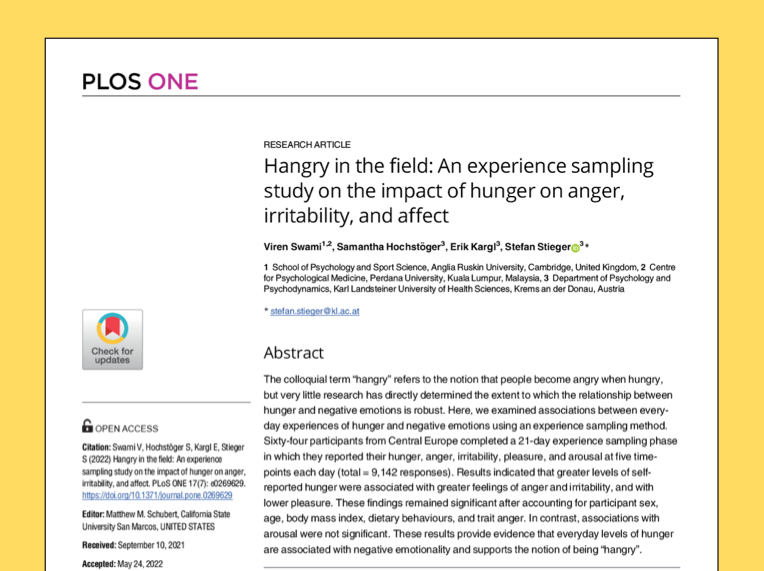
The researchers concluded:
“The results of the present study suggest that the experience of being hangry is real, insofar as hunger was associated with greater anger and irritability, and lower pleasure, in our sample over a period of three weeks.”
The researchers went on to state:
“Although our results do not present ways to mitigate against negative-hunger-induced emotions, existing research suggests that being able to label an emotion by putting feelings into words (e.g., “anger”) could help individual to regulate those emotions.”
In other words, if you are able to recognise that you’re hangry that gives you power. You can then decide to do something about it.
When I was in high school, I was always hangry. But there was no language for this state back then.
I also had no idea about healthy eating. So, when I became hangry, I felt confused. I didn’t know what was going on. I didn’t know what to do.
But knowing what I know now, I can see I was the maker of my own misfortune. Let me explain.
As a teenager, I’d start the school day with a big bowl of nutrigrain (i.e., a sickly sweet cereal). Since iron men were plastered all over the cereal box, I foolishly believed that this was a highly nutritious breakfast.
By 10am, my stomach would be rumbling at max volume in class, which usually always coincided with silent reading.
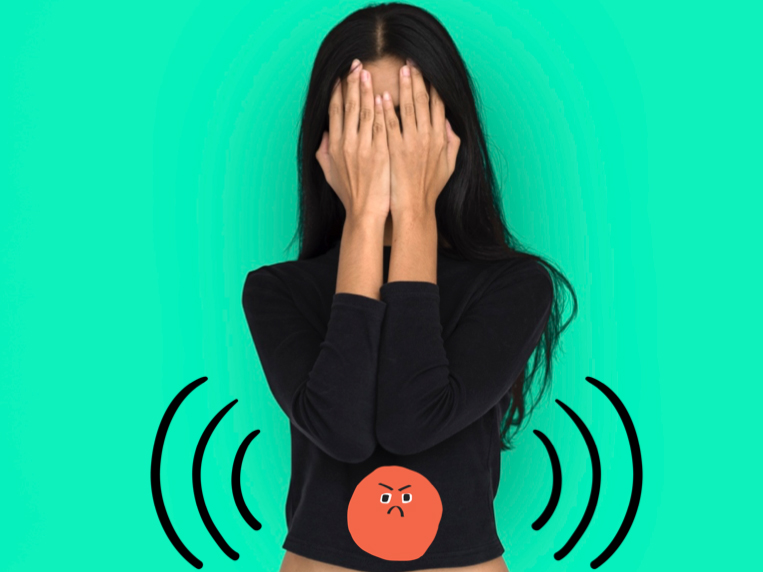
This left me feeling embarrassed, highly irritable, and distracted (I was more focused on my noisy stomach than on my textbook).
Recess would arrive and I’d eat a packet of potato crisps or an Uncle Tobys Le Snak (i.e., a pre-packaged combo of cheesy spread and crackers).
On the menu for lunch was a sausage roll or meat pie packed full of mystery meats.
Then I’d come home and eat another bowl of sugary cereal as a snack.
Vegetables and fruit were more like ‘sometimes/occasional’ foods than a significant part of my diet.
You don’t need to be a nutritionist to see why I felt hangry all the time. I was eating high GI foods that contained little to no fibre.
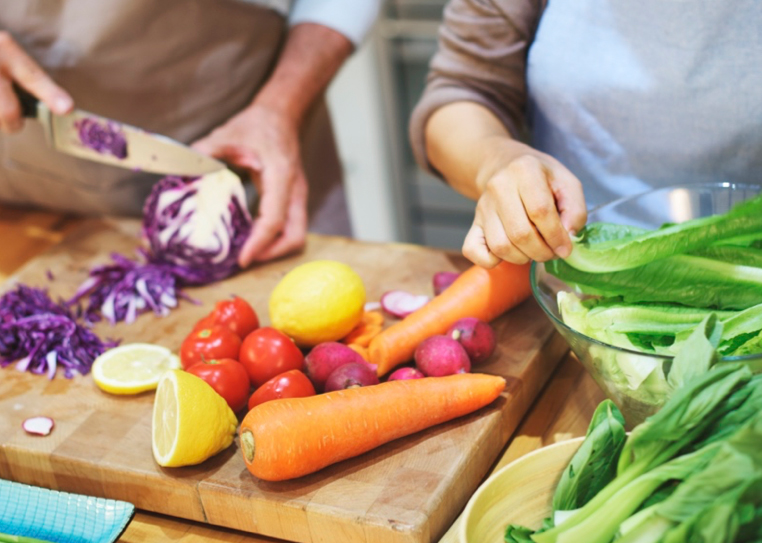
When I hit my thirties, I realised I had to improve my diet. Over the course of a year, I studied plant-based nutrition through eCornell University and participated in online culinary school.
All of this training was time and money well spent.
Not only did I learn how to cook with plants and wholefoods, but I learnt how to eat for optimal brain power and keep hanger at bay.
If you find yourself getting hangry, I want you to know that you can learn to eat in a way that leaves you feeling satisfied and able to focus in class.
Here are my top tips for preventing and handling hanger when it strikes:
What foods fill you up and keep you satisfied? Foods that are packed full of fibre.
High fibre foods include:
• Vegetables
• Fruits
• Wholegrain foods (e.g., brown rice, oats, wholemeal pasta, and wholemeal bread)
• Legumes (e.g., lentils, kidney beans, and chickpeas)
• Nuts (e.g., almonds, cashews, and walnuts)
• Seeds (e.g., sunflower and pumpkin seeds)
You won’t find any fibre in eggs, dairy, and meat (note: the grisly tough bits in meat are fat, not fibre). You also will find little to no fibre in processed cereals and junk foods.

Not a fan of fruits and vegetables? Never fear.
Here’s a fun fact: your taste buds repopulate every 10 days.
This means you can retrain your palate to prefer the subtle flavours of healthy, high fibre foods.
Challenge yourself to stop eating processed junk food for two weeks and see what it does to your food experience. This was a game changer for me!
I have a motto: “Always carry healthy snacks”.
If I have a little pack of healthy snacks when I head out on the road to present, I know I’m going to be okay.
What do I put in my snack pack?
Usually nuts, veggie sticks, and chopped up fruit.
I tend to steer clear of potato chips, cakes, and biscuits as these foods don’t leave me feeling full or particularly good.
Occasionally, I’ll forget my snack pack. When this happens and hanger is about to strike when I’m out presenting at a school, I have a plan that I execute immediately following the presentation: I drive to a Subway or Zambrero store (whichever is closest).
I know exactly what I will order at these places:
Subway – Veggie delight sub with avocado (no cheese)
Zambrero – Bean burrito with half the rice and lots of salad (no cheese)
Deciding on what I’m going to order well in advance means I am less likely to make poor food choices when my willpower hits rock bottom.
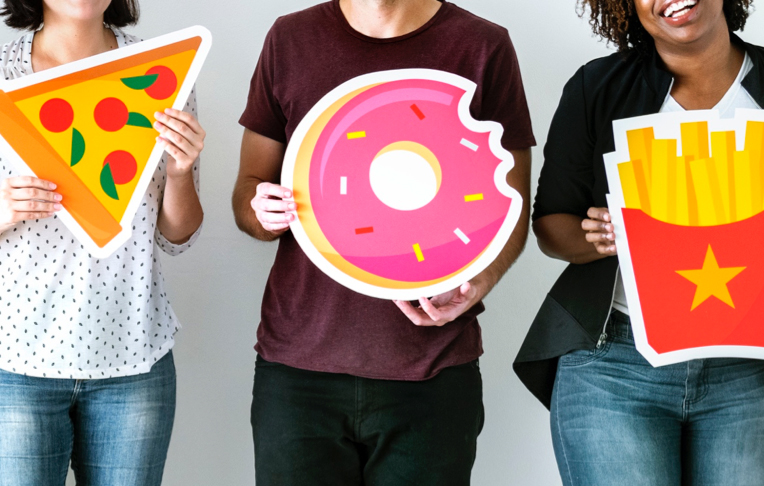
High GI foods (e.g., white bread, white potato, white pasta, and cakes) create a surge in glucose in your blood. Whilst you need glucose to function, too much glucose all in one hit overwhelms your body, particularly your brain. You’ll have a sugar high, but it will be followed by a low. That low is usually hanger.
Here’s the dilemma . . . .
When hanger strikes as a result of consuming high GI addictive foods, you’re more likely to make poor food choices. When you’re having a hanger melt down, you’re not going to be reaching for carrot sticks or broccoli. You’ll be reaching for foods that give you another blast of dopamine. You end up in a vicious cycle (Eat addictive junk > Hanger > Eat addictive junk).
This doesn’t mean you need to cut out all high GI foods though. Professor Jennie Brand-Miller and her colleagues state in the New Glucose Revolution series:
“High GI foods such as potatoes and wholemeal bread make a valuable nutritional contribution to your diet, and when eaten with protein foods or low GI carbs the overall GI value of the meal will be about medium.”
I know you’ve heard this a million times before but breakfast really is the most important meal of the day. But most people are saying “Bring on the hanger!” by starting the day with Rice Bubbles, Coco Pops, and jam on white bread.
These breakfasts are devoid of fibre and are high GI. In other words, they’re quickly digested and cause a spike in blood sugar levels (cue rumbling stomach).
Swap the processed, sugary breakfasts with one of the following high fibre breakfasts:
• Baked beans (low in salt and sugar) on wholemeal bread
• Tofu scramble
• My favourite choco-bluberry smoothie
• Overnight oats

Lentils and beans have been shown to have magical properties. Meals containing beans can delay the return of hunger (making us feel fuller for longer). Studies have also shown consuming beans creates something called “The Second Meal Effect”. Dr Michael Greger explains this effect as follows:
“Eat lentils for dinner, and eleven hours later, your body reacts differently to breakfast. Even when made to drink straight sugar water the next morning, your body is better able to handle it.”
In other words, eating a meal containing beans or lentils will lower the GI index of the next meal you eat. For example, if you have a bean burrito for lunch and a few hours later you eat a piece of chocolate cake, your blood sugar levels won’t spike as much (thanks, beans!). Pretty amazing, right?
We know that hanger is real, but it’s not something you need to struggle with. By making a few simple tweaks to your diet, you’ll be amazed at how certain foods can help stabilise your mood and leave you feeling fuller for longer.
Have you ever considered that the food you eat could be affecting your motivation levels, wellbeing and ability to focus?
I’ve been exploring the research in this area and I’ve got to say, the research is so compelling. It’s made me clean up my act.
I’ve ditched the junk food. I’ve packed the fridge full of fruits and vegetables. I’m cooking delicious plant-based meals.
I’m eating like an absolute champion. But this wasn’t always the case . . .
I grew up in an Italian family that had some wonderful food traditions.
Tomato Sauce Making Day was one of them.
My entire family (aunties, uncles, my cousins and their children) would come together and in a couple of days, we’d make hundreds of bottles of tomato passata.
When I tell people about this tradition, they automatically look impressed. They think:
“Wow! You must have grown up eating amazing Italian food all the time.”
Nope.
Sure, we had some delicious feasts for special occasions. But most of the time I ate processed junk foods.
My parents worked really hard on the family orchard. At the end of the day, they would come home exhausted. They had no energy to cook. And I didn’t know how to cook.
So we did what was easy and convenient: we ate take-away. And we ate a lot of it.
As a teenager, I had no idea that what I ate had anything to do with my poor mood, brain fog and low energy levels. No one ever told me that these things could be eliminated by making a few simple changes to my diet.
It wasn’t until a few years ago that I learnt how food could shape my ability to think and influence my mood.
The research is in. Eating certain foods can improve your wellbeing, motivation and brainpower. Let’s take a quick look at one of these research studies . . .
A study conducted by a research team at the University of Otago found even a small increase in fruit and vegetables could lead to rapid increases in motivation, vitality and flourishing. In this study, the researchers took a group of university students who didn’t consume many fruits and vegetables (they ate less than 3 serves of combined fruits and vegetables per day) and divided them into three groups:
Group 1: Control group – they didn’t change their diet.
Group 2: Ecological momentary intervention (EMI) group – they would receive two text messages a day for two weeks encouraging them to eat more fruit and vegetables, plus a $10 voucher to buy fruit and vegetables.
Group 3: Fruit and vegetable intervention (FVI) group – these students were given a bag of two weeks’ worth of fresh fruit and vegetables. They were told to consume at least two serves on top of what they usually ate each week.
Group 3 showed a significant improvement in their wellbeing (more than the other two groups). They showed increases in vitality, flourishing and motivation.
Here’s what was so incredible . . .
Group 3 (i.e. the participants who were given the big bag of fresh fruit and vegetables) were consuming only one extra serve of fruit and vegetables than the control group. Keep in mind that group 3 had only increased their consumption of fruit and vegetables by 1.2 serves on average from their baseline levels. But that extra serve seemed to make a big difference.
The researchers concluded:
“Despite both intervention groups reporting modestly higher and similar consumption of FV [fruits and vegetables] relative to control (3.7 vs 2.8 daily servings), only young adults who were given two weeks’ worth of FV showed improvements in their feelings of vitality, flourishing, and motivation. The short duration of our study indicated that FV intake translated into improved well-being quite rapidly.”
So why didn’t group 2 (the EMI group) show any improvements despite consuming a similar amount of fruit and vegetables as group 3?
The researchers stated:
“One possibility is that this difference might be due to lower control over type, quality, and preparation of fruit and vegetables eaten by the EMI group. The EMI group were free to choose whatever fruit and vegetables they liked, and when surveyed, we found that they were more likely to eat cooked vegetables in casseroles and mixed into their main meals. By contrast, for the FVI group, we chose high quality produce, which was mostly eaten raw (including the carrots, eaten as snacks). Some researchers have shown that more optimal psychological outcomes are associated with the consumption of fresh fruit and raw vegetables/salads, but not cooked vegetables.”
They also mentioned that the participants may have been annoyed by receiving the regular text message reminders and this may have “wiped out any gains in well-being”.
Overall, I find this study really interesting because it shows when you eat more fruit and vegetables you can see immediate psychological benefits. It also highlights the importance of easy access to good quality fruit and vegetables.
This is just one of many studies I came across that illustrates the powerful role food plays in impacting wellbeing.
When I was in my early twenties I spent thousands of dollars on personal development courses that promised greater happiness levels and to “unlock my hidden potential“. But not one of these courses talked about food nor did they give me the benefits that switching to a healthy plant-based diet did.
I’ve spent many hours exploring the research literature on food and the brain. What I’ve discovered has been life changing. Changing my diet turned out to be the cheapest and most effective pathway to greater happiness and wellbeing.
I want to share this knowledge with others. It seems crazy that this information isn’t widely known and accessible.
So this is why I’ve created the online course Eating Smart.
In this course, you’ll see that every time you sit down to eat you have an opportunity to improve your mood, ability to focus and brainpower.
Learning how to cook in a healthy way improved every aspect of my life: my energy levels, my ability to think clearly, my mood and memory all improved. The mental fog lifted. I became sharper.
I want this for you. So I’m sharing the research and my best strategies with you in this new course.
The Eating Smart program starts on the 19th October 2020. More details can be found here.
Dr Jane Genovese delivers interactive sessions on learning to learn, combating procrastination, exam preparation, how to focus in the age of distraction, habit formation and much, much more!
Get FREE study and life strategies by signing up to our newsletter:
© 2024 Learning Fundamentals